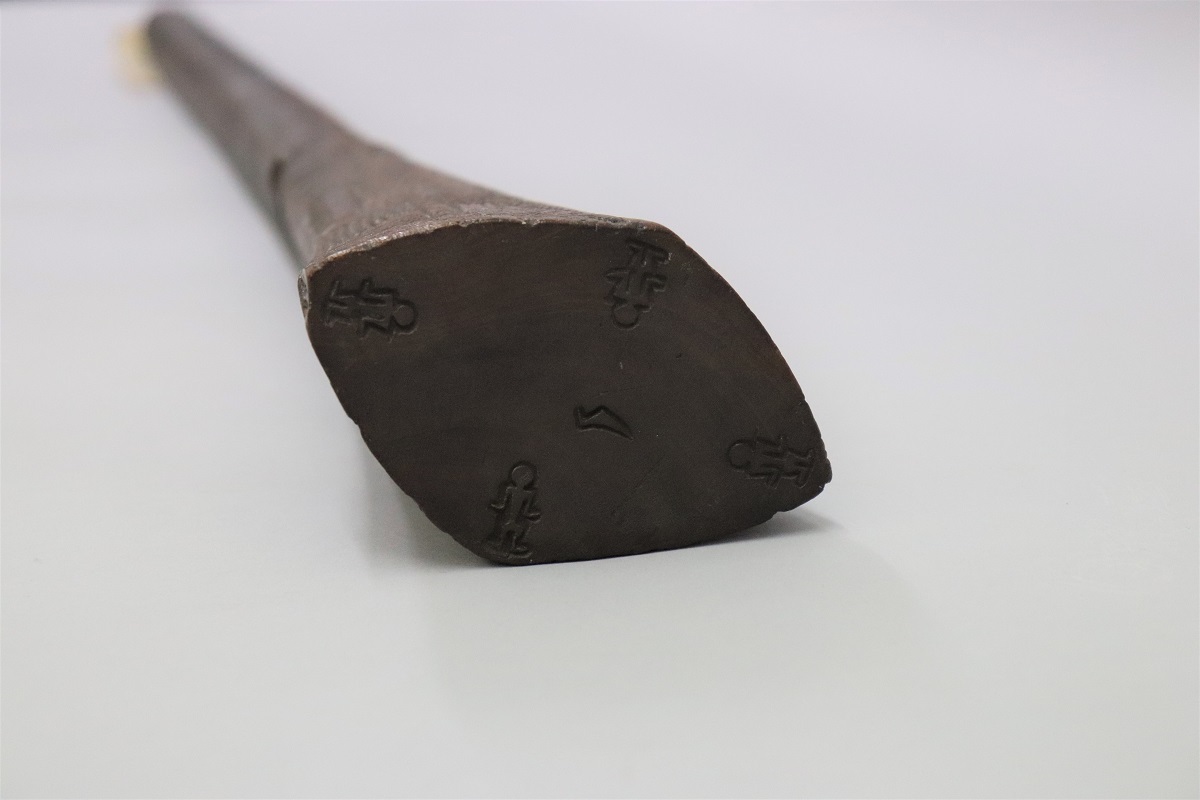A Tongan war club such as this apa’apai was more than merely a weapon, it was also a symbol of male rank and status.

Crafted by highly skilled tufuga tata (master carvers), the clubs are among the most complex of all Pacific wood carvings despite their seemingly straightforward physical form. Each apa’apai was expected to conform to strict canonical traditions and stylistic hierarchies that mediated the dimensions, proportions and curvature of a club.
Upon its production, an apa’apai was presented to its owner unadorned. As a warrior achieved success in battle a new section of his club would be decorated with tata – geometric designs and patterns including chevrons, bars and triangles. These intricate markings, applied to the wood’s surface using a tool of shark teeth lashed to a short wooden handle, signify valour and triumph. Given that this club is entirely incised and its base ornamented with four human figures and one bird motif it was likely owned by an esteemed combatant.
This apa’apai was collected during Captain James Cook’s third and final voyage, during which time he visited Tonga between 28 April and 17 July 1777. Of all Tongan material culture collected during Cook's three voyages clubs were by far the most numerous, accounting for an estimated 20% of all traded objects.





